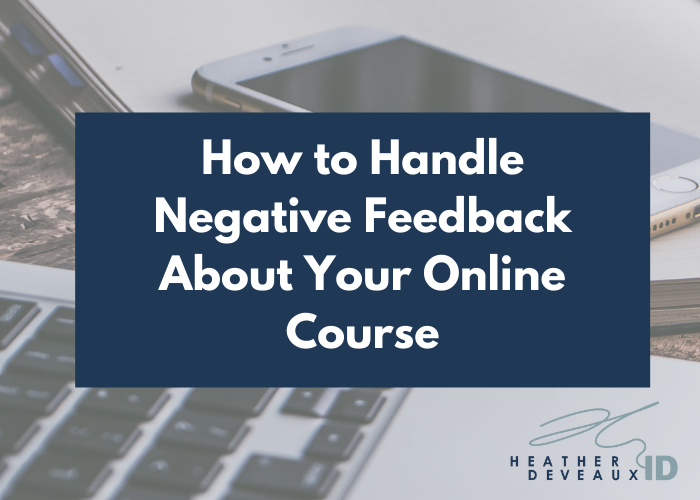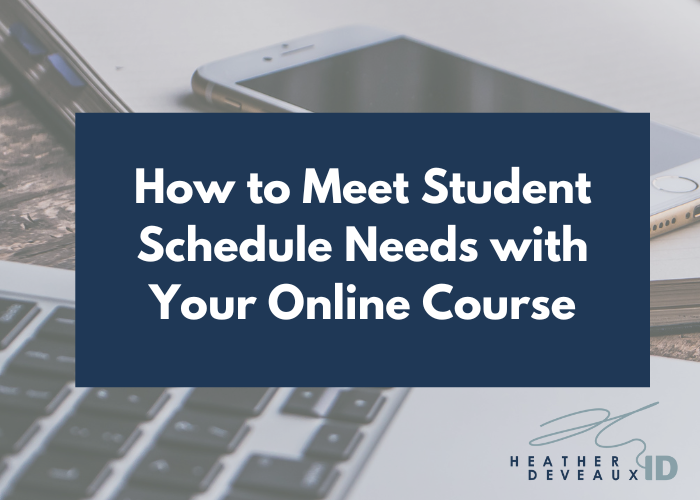The Long-Term Implications and Surprising Cost of Online Learning
Non-profit organizations have limited time and resources to invest in upgrading the learning systems and infrastructure needed to deliver programs. That’s why it’s so important to build training that can stand the test of time. In this article, we’re going to explore the long-term implications of online learning. And we’ll cover some of the issues related to putting content online. Plus, I’ll give you three strategies to help reduce friction when it comes to updating that learning content.
Online Courses are Not Evergreen
Let me kick things off by throwing some controversy into the mix. Despite what you may have heard about evergreen content living on the internet forever, it doesn’t. Good quality educational content needs constant attention and monitoring. There are several phases of creating courses that go undiscussed in the online world. These are important considerations for non-profit organizations looking to update or upgrade training options.
First, it takes several months to create an online course. During this time, we work together to plan, develop, and create the learning content that your clients will use. During the first launch of the course, feedback is vital to ensure you have delivered what clients have asked for. Hiring an instructional designer can help you focus your efforts.
Second, once you’ve collected the data and analyzed it, you may have to make some changes out of the gate for the second launch of your course. This is normal and is not a setback. You’re learning what your clients need.
Third, you need to test your training on a regular basis to ensure the activities, images, feedback and systems are working.
And finally, you need to ensure the content you’ve presented remains relevant over time. In some industries, statistics change quickly, information becomes defunct and what was true yesterday is not true today.

The Cost of Letting Content Sit
Some things should steep, like tea. But when it comes to educational content, don’t leave it unattended long. Entrepreneurs often tout the benefits of evergreen and online content as one-and-done, but they are well served to check in often. Aside from the usual downfalls of letting content sit, which include broken links, unadapted content for accessibility, and follow or unfollow issues, educational content can quickly become defunct. In other words, industry changes so fast, your course can be useless the day after you hit publish.
Fear mongering aside, what you want to consider is that creating educational content is not a one-time expense. Sure, a flat-fee instructional design service makes it easy to get your content online, but hitting the publish button doesn’t mean the job is done.
There is a great sense of relief for clients when they see their training online, or they’ve just wrapped delivering an in-person program. And there are many arguments for delivering the same course over and over again: create once, leverage all over the place. If your training isn’t what clients wanted, they’ll be sure to tell others. Not in a good way, either.
There’s nothing worse than getting an email from a client informing you of something outdated in your course. It stings and sends you into a tailspin of fix-it mode. That’s a waste of your time. So now you’ve spent money, time, and resources trying to play catch up. Is that the way you want to operate? Probably not.
Do You Need to Update Your Training?
Because content is not evergreen, it is best to build a course that is flexible and easy to update. That is not always the case for my clients, however. Many non-profit organizations reach out to me for help updating old content that is sitting in a binder on a shelf. Don’t worry about falling behind. Many organizations are still working to bring content online, and in some cases, organizations are going back to in-person learning based on feedback from learners.
As a professional instructional designer, I understand that online learning is not for everyone. And as an organization committed to providing the best experience possible for your clients, you should understand that fact as well. Just because you think it’s a good idea to update content and build an online course, doesn’t mean your clients want to learn that way.
Whether you are updating an in-person course or bringing content online, here are three strategies to help you succeed now and in the future.
Content Update Strategy #1
Don’t read between the lines. Rather than follow your gut or your next big idea to create new content or update existing content, make sure you read the data. Ask questions of your clients, get feedback and pay attention to what the end user is telling you. Many of my clients come to me wanting to upgrade a program because of something they saw online, but that doesn’t mean your clients will want those upgrades. Don’t update your educational content on a hunch. Everything should be data-driven. The best source of the data you need? Asking your clients. This may save you a lot of time, money, and effort in the long run.
Content Update Strategy #2
Create an updating plan. It’s easy to feel as though your course is never finished and your organization may feel the need to keep working on it, long after it’s complete. This is normal and to be expected. Learning is an evolution and static copy on a page is only valid for so long. While updates will eventually have to be made to your learning content, it is more efficient to put a plan in place for reviewing and updating your content. This will help reduce the hampster wheel effect of constantly updating and tweaking content. Shorter courses can be reviewed once or twice a year and longer courses can be reviewed in phases.
Content Update Strategy #3
Sometimes clients contact me to update a course for a new audience. The organization has identified a new opportunity to provide support or training to a group and they want to revamp a course to suit the needs of the new audience. This is where marketing and education become blurred.
With so much information about marketing and customer segmentation out there, organizations often confuse market research with educational needs assessments. Let me explain: market research tells you there is a need to deliver training. An educational needs assessment tells you who, what, when, where and why the training needs to be delivered. And often, a course can be delivered, with very little changes, to another group of people provided they have the same desired outcomes as the first group. What this means for you is that you might not have to make significant changes to your training. But you DO have to make significant changes to how you market that training.
Where Do You Start?
Creating a successful and long-lasting online course starts with the right help. If you’re struggling to get your ideas on paper, you’re not alone. It can be overwhelming to organize information, know what to include and what to leave out. I work with non-profit organizations to bring ideas to life and see first hand what happens when people have the right support and direction to create online courses. But we don’t stop there. I build courses that you can easily update when the time comes. There’s no need to worry about staying up-to-date when your course has been developed for future consideration. Want to learn ensure the longevity of your training? Book a call with me now.






